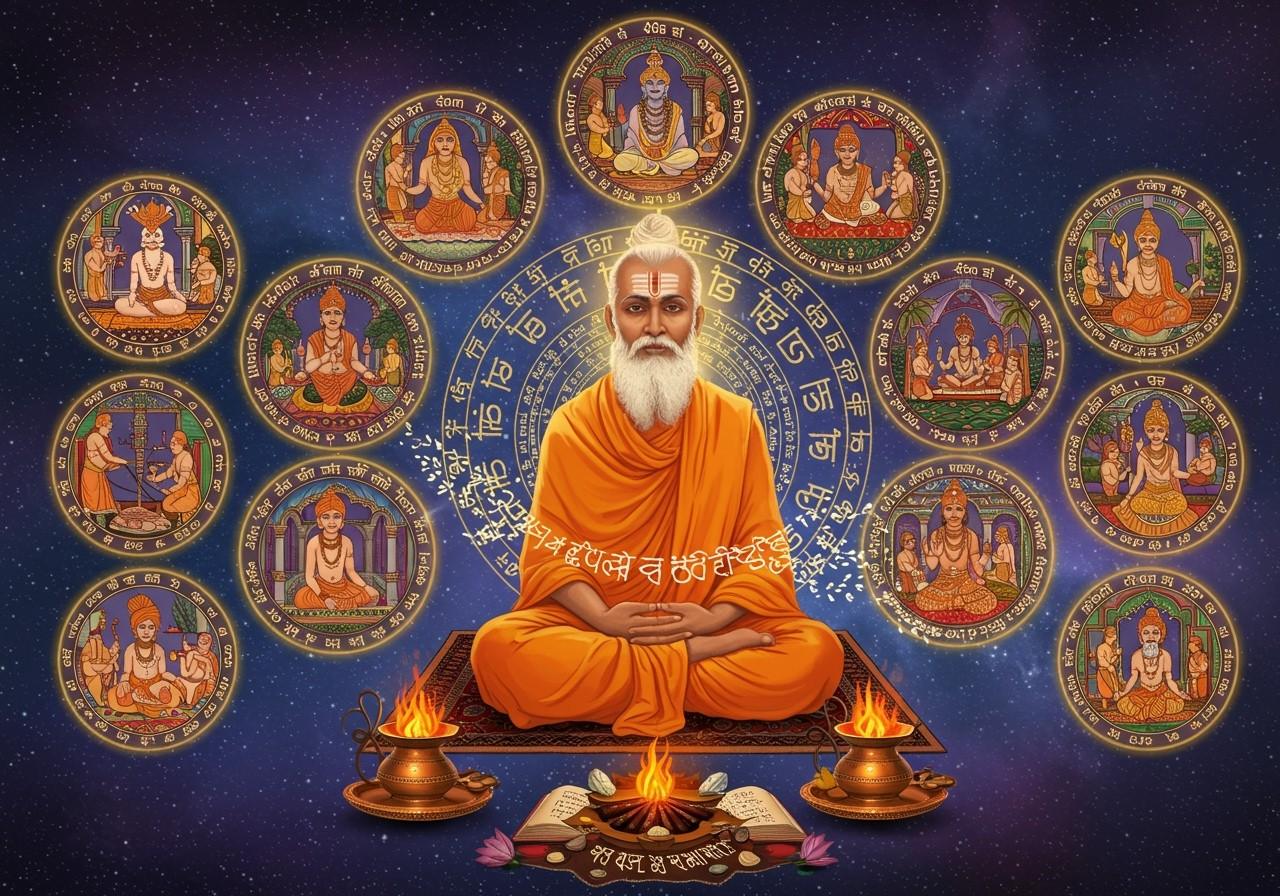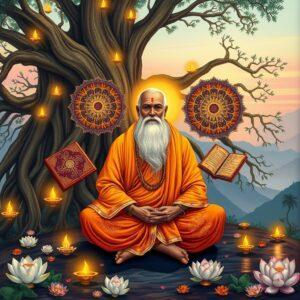
The Rigveda, a cornerstone of Hindu scriptures, holds immense cultural and spiritual significance. Dating back to around 1500 BCE, it is a collection of hymns that forms the foundation of Vedic literature. This blog aims to simplify the structure of the Rigveda, exploring its Mandalas, Suktas, and key deities, making this ancient scripture more accessible to everyone.
What is the Rigveda?
The Rigveda is an anthology of hymns, prayers, and rituals praising various deities. Composed in Vedic Sanskrit, it is the oldest of the four Vedas. Divided into ten books called Mandalas, it contains 1,028 hymns known as Suktas. Each Sukta comprises verses (Riks) dedicated to specific gods or natural phenomena. The Rigveda offers insights into the early Vedic civilization, serving as both a religious and historical text.
Understanding Mandalas
Mandalas are the ten books structuring the Rigveda. Each Mandala has a unique theme. For instance, Mandala 1 focuses on deities like Agni and Indra, while Mandala 10 delves into philosophical hymns like the Nasadiya Sukta. Here’s a glimpse at some key Mandalas:
- Mandala 1: Hymns to Agni, Indra, and other principal deities, laying the foundation for Vedic worship.
- Mandalas 2-9: These Mandalas expand upon the praises and invocations of different gods, enriching the Vedic pantheon.
- Mandala 10: This Mandala explores profound philosophical concepts, including the Nasadiya Sukta, which contemplates the origins of the universe.
Understanding the role of each Mandala helps grasp the overall structure and thematic development of the Rigveda.
Exploring Suktas
Suktas are the hymns within each Mandala, dedicated to gods, natural elements, or philosophical ideas. Notable Suktas include:
- Purusha Sukta: This Sukta describes the cosmic being Purusha, whose sacrifice is believed to have given rise to the universe.
- Gayatri Mantra: A highly revered chant dedicated to Savitr, the sun deity, invoking wisdom and enlightenment.
These Suktas are integral to Vedic rituals and have influenced later Hindu practices. They vary in length and structure, offering rich poetic and spiritual significance.
Key Deities and Themes
The Rigveda revolves around deities like Agni (fire), Indra (storm and war), Soma (a ritual drink), and Varuna (cosmic order).
Agni – The Fire God
Agni, the fire god, acts as the intermediary between humans and gods, carrying offerings through the flames. Hymns to Agni highlight his purifying and transformative powers.
Indra – The Warrior God
Indra, the warrior god, is praised for his strength and valor in battles against demons. He is associated with storms, rain, and the release of life-giving waters.
Soma – The Sacred Drink
Soma, both a deity and a ritual drink, is believed to bestow immortality and divine inspiration. Hymns describe its preparation and effects, connecting it to the gods.
Varuna – The Cosmic Order
Varuna represents cosmic order and moral authority, upholding the laws of the universe. Hymns to Varuna emphasize his omniscience and role in maintaining righteousness.
Navigating the Structure
Understanding the Rigveda’s structure simplifies navigation and comprehension. The text is organized into Mandalas, which contain Suktas composed of verses called Riks.
Tips for Beginners
For newcomers, starting with simpler hymns and gradually progressing to more complex ones is recommended. Begin with Mandala 1, focusing on familiar deities like Agni and Indra. Utilize reputable translations, such as those by Ralph T.H. Griffith, and consider the historical context for a deeper appreciation.
How Poojn.in Enhances Your Vedic Journey
Poojn.in, India’s largest cultural goods and services store, offers a wide range of products to support your exploration of the Vedas. We provide authentic items like:
- Rigveda Texts: Explore various editions and translations of the Rigveda, including works by scholars like Prof. R. L. Kashyap and Prof. S. Sadagopan. Learn more about the Vedas and their practical applications.
- Ritual Items: Discover traditional brass and copper vessels, pure cotton yajnopavita (sacred thread), and curated Vedic ritual kits for authentic ceremonies. Explore our collection of ritual items.
- Sacred Ingredients: Find authentic kumkum, sandalwood, dhoop, and other essential ingredients for Vedic rituals, ensuring the purity and sanctity of your practices. Browse our selection of sacred ingredients.
Visit poojn.in to explore our comprehensive collection and embark on a deeper understanding of the Rigveda and Vedic traditions. Our customer service team can guide you in selecting the right resources for your spiritual journey.
Conclusion
The Rigveda offers a profound glimpse into ancient wisdom and traditions. Its hymns, deities, and themes reflect the rich cultural heritage of the Vedic period. By understanding its structure and utilizing resources like those offered by poojn.in, we can embark on a rewarding journey of discovery, connecting with the timeless wisdom of the Rigveda.


